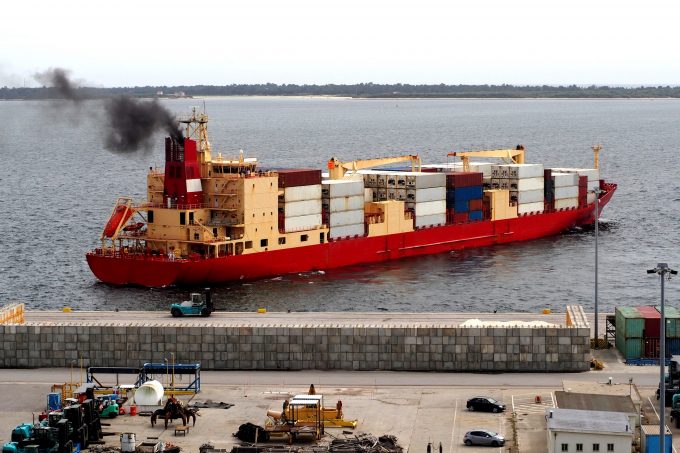News Podcast | Apr 2024 | Baltimore blame game, shadow boxing on transpac and HK’s maritime decline
This episode looks at the supply chain and insurance fallout following the tragic Dali incident in Baltimore ...

Shipping lines now paying EU ETS surcharges, under ‘the polluter pays’ principle, will pass these costs down the value chain – but there are fears the surcharges might not be accurate.
The EU ETS came into effect on 1 January, requiring vessel owners to buy EU allowances (EUAs) that correspond with the per-tonne carbon emissions of their ships that call at EU ports.
The market-based price of EUAs remains highly volatile, as they correspond with the bidding nature of purchase.
The MD of ETS management platform Oceanscore, Albrecht Grell, outlined a standard calculation for an Asia-to-Europe voyage that produced a surcharge estimate of €11.15 per teu.
“What carriers do is operate off a standard model,” he explained, which would make generic assumptions to produce a cost, using average ship design, average speed, average EUA price, average capacity utilisation, and so on.
He said there was “nothing wrong with using standard data” as, at its current 40% phase-in stage, the surcharges resulting from the EU ETS “won’t be significant”.
But he warned: “That will change over time as ETS goes up.” Indeed, by 2026, the EU ETS will be fully phased in.
He added: “If EUAs get to €150, it will be a significant cost, and that is when it makes sense to have solid agreements and understanding with carriers.”
Mr Grell said shippers could work out the exact cost produced on a specific voyage, but “it takes more time than looking at a standard table”, as there are many contributing factors.
Using AIS data, it is possible to see the exact route and wind and current speeds at the time of transit, and calculate this with the vessel design, utilisation, capacity, EUA price, etc.
“You are all good using standard approaches, but there are better ways if you want more detail,” he advised.
Director of Global Shippers Forum James Hookham told The Loadstar Podcast carriers breaking up their journey before entering EU ports could make significant savings.
He said: “Because the ships are leaving for the Far East, heading straight for the Cape of Good Hope, and then coming out into the Atlantic, in theory the length of the journey they will have to account for in terms of emissions is the whole whack, from Singapore to say, Rotterdam.
“They will be looking to break that journey at some point to lessen the final leg into the EU port, because it’s on that final leg that they will have to account for their carbon emissions.”
Mr Hookham explained that this would make surcharges cheaper for carriers, which should be reflected in their final bill to shippers.
Listen to the latest Podcast clip about why shippers are calling for more transparent surcharges amid Cape diversions
“If ships dock in the UK before moving onto the EU, it will result in a far shorter journey to account for emissions under the EU ETS… there are several UK ports that can accommodate this and which I’m sure would be anxious to capture as much trade as possible.
“Then there will be some accounting adjustments because of a lower ETS fee… there will be substantial savings that the shipping lines can make. It would be a good idea if they started showing their customers their workings. How did they arrive at these surcharges? Just lay it out for them, rather than sending them a bill with it all lumped together.”
Mr Grell added: “My hunch is that the overall surcharge is a little over what the cost would be.”
However, he explained that while surcharges might be a way for carriers to disguise prices, “the market will not tolerate enough for them to make significant profit”.
It is the end consumers that will ultimately feel the pinch, summarised Mr Hookham. “There is inevitably an inflationary effect of higher shipping costs, we saw that during Covid.”
Comment on this article